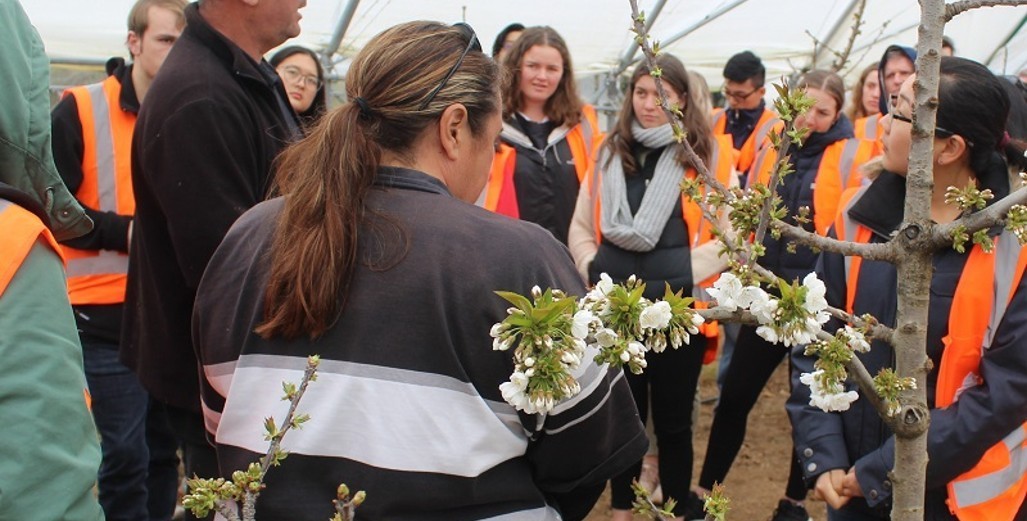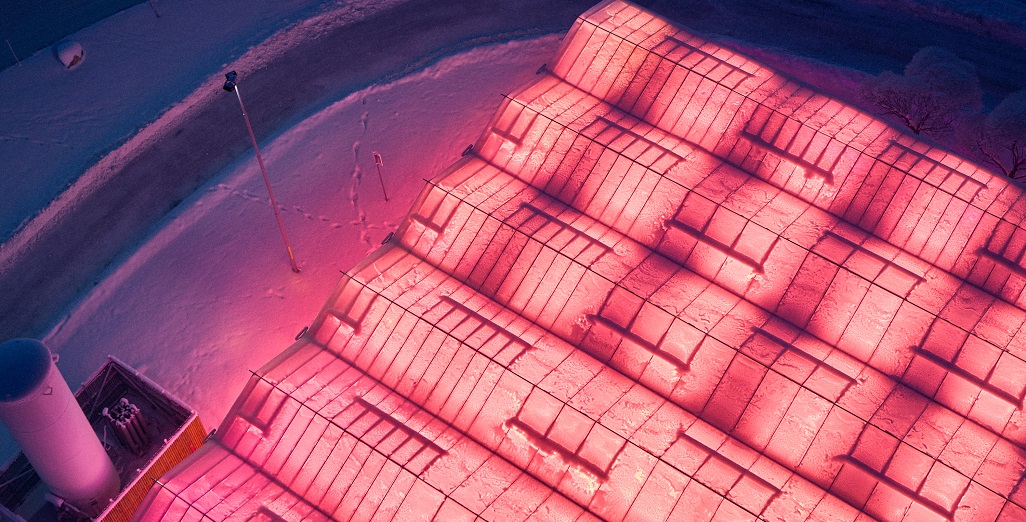Sign up here to subscribe to the Grower2grower Ezine. Every two weeks you will receive new articles, specific to the protected cropping industry, informing you of industry news and events straight to your inbox.
Dec 2019
CHRISTMAS CHERRIES Update 2019

By Dr Mike Nichols
In 2017 I organised for Alan & Dot Bissett (of the Wee Red Barn, near Masterton, New Zealand) to purchase some 200 cherry trees, which had been grown in root restricting bags in a greenhouse in North Otago. These “mature” trees were dully freighted up to Masterton, and planted in August in four Haygrove tunnels. Incredibly they produced just over about 4 kg per tree of ripe cherries just before Christmas.
Last year (2018), after what is best described as a low/no pruning strategy I visited the property on 13 December. It was raining, but no problems as the Haygrove tunnels kept the fruit dry, (so no splitting), and the tunnels supported nets which prevented birds (at least most of them) from damaging the fruit. We estimated that the yield would be in the region of 10kg/tree, which at pre-Christmas cherry prices would provide a very nice income—particularly as all the fruits could be harvested from the ground with no need for ladders.
In the spring of 2017 the Bissett’s purchased a number of modern varieties of cherries from McGrath’s Nursery in Cambridge. These had been recently grafted onto the semi-dwarfing Colt rootstock, and on arrival were immediately planted into 20 litre bags filled with coir, and grown hydroponically in a tunnel house. By Christmas the growth was tremendous (see photo). The plants were planted in the soil in a tunnel house the following winter, and trained along wires using the UHF system, which involves training two shoots parallel to the ground along the row and then letting the new shoots grow upright from this basic structure. This means that the rows may be as little as 2-3 m apart, and the plants in the row may be 5 or more metres apart. The shoots which grow from the two main structural shoots are the pruned in a renewal system, so that the older shoots ae continually being replaced with new shoots, and therefore the fruiting spurs are always young and vigorous. In the winter of 2019 it was clear that these very young tress would produce a small crop that season, as many fruiting spurs were apparent on the young trees. (see photo).
The next move is to examine the potential of using the very dwarfing cherry root stock developed in Switzerland. There ae two lines of Gisella available in New Zealand (Gisella 5 and Gisella 12), and these will be used to graft some cherry scions later this season.
All of this poses some really good questions about cherry production on New Zealand, which for a long time has been a high risk crop because of problems of unseasonable rain and damage from birds.
There is little doubt that the success of New Zealand’s cherry exports is very dependent on the combination of Chinese New Year and the fact that Central Otago fruit matures at the same time. The only other cherry production countries in the southern hemisphere (Chile, South Africa, & mainland Australia), all mature earlier, and only Tasmania is a potential competitor.
However there is a real risk that Central Otago may have climatic problems in the future. Global warming is a reality, and one of the major components of global warming is that weather (including rainfall) patterns will change. Rain at the wrong time (close to harvest) can decimate a sweet cherry crop.
With the global warming risk, it is difficult to justify the emphasis on producing rain sensitive fruit in traditionally low rainfall areas, when there is so much uncertainty with future weather patterns. Perhaps it is time to consider rain-proofing such crops?
This then poses the question of whether we actually need to use the dryer parts of Central Otago for such crops, or whether the Waitaki Valley, or Maniototo, or even McKenzie Country might provide a similar climate with much lower land costs? $ 200,000/ha has been quoted as the cost of establishing cherries in Central Otago, and high plastic tunnels only cost about $100,000.ha.
Has anyone tried producing early cherries in the Waikato? I imagine that away from the coast that there would be sufficient winter chilling. With half of New Zealand living north of Taupo, the demand for early cherries would be excellent, and growing in netted tunnels would significantly reduce the risk of split fruit due to rain or losses due to bird damage.
Article supplied by Dr M A Nichols
Email: m.nichols@massey.ac.nz
Photos supplied by Dr M Nichols
CLASSIFIED
Subscribe to our E-Zine
More
From This Category

High-tech spy gear to uncover the secrets of Bumble bees in Tasmania

Cherry Production in New Zealand – Mike Nichols

Signify helps Agtira to bring locally grown cucumber to Swedish market
Dimmable Philips LED top-lighting fixtures support maximum efficiency and better use of energy

Plant & Food Research welcomes changes to gene technology regulations


























